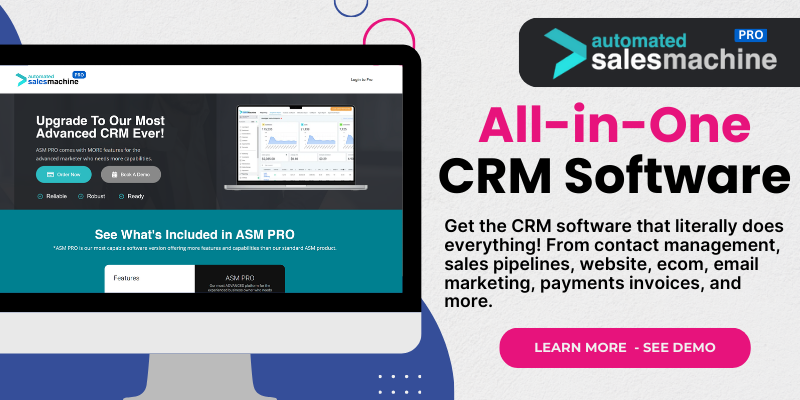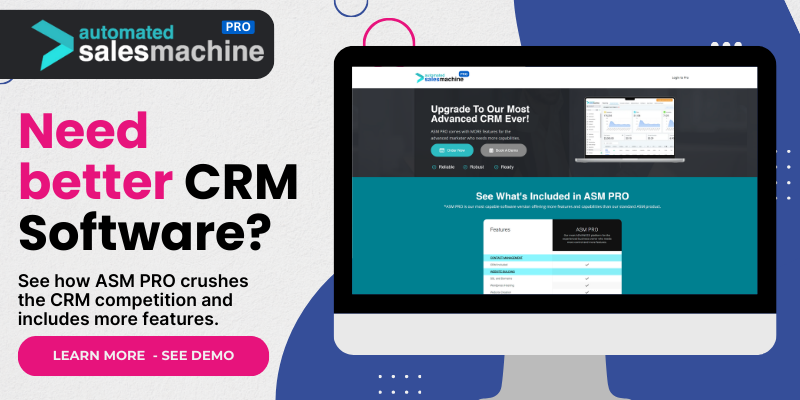Understanding CRM and Its Importance for Software Development
What is CRM?
Alright, let’s start from the top! Customer Relationship Management (CRM) is more than just a buzzword in our techy world; it’s the backbone of any successful business. A CRM system is designed to help you manage your company’s interactions with current and potential customers. Think of it as your digital Rolodex, but with way more capabilities. My journey into CRM began when I realized how much chaos a good system could eliminate, especially in the dynamic environment of software development.
When you’re juggling multiple projects, clients, and deadlines, having a centralized system to track all interactions is crucial. This not only streamlines communication but also enhances collaboration across teams. Imagine having all your customers’ info and your team’s input in one place – a total game-changer!
Moreover, in software development, clients often require ongoing communication and updates. A solid CRM not only helps you manage these relationships but also nurtures them, leading to long-term partnerships. So, understanding CRM’s essence is really the first step in choosing the right one for your needs.
Why is CRM Important in Software Development?
The importance of CRM in software development cannot be overstated. From managing client expectations to tracking project milestones, it’s a vital tool. Personally, I’ve witnessed projects fall apart due to miscommunication. But with a proper CRM, you have all the project details at your fingertips, ensuring everyone is on the same page.
Another aspect is customer feedback. With a good CRM, collecting and analyzing feedback becomes a breeze, helping you improve your software product over time. Happy clients usually lead to repeat business, and who doesn’t want that?
Lastly, being able to segment clients and manage their needs individually helps build tailored experiences. Clients love it when they feel taken care of, and a robust CRM helps facilitate this personalization.
Choosing the Right CRM for Your Needs
This part can get a bit tricky! There are tons of CRM systems catering to various business types and sizes. When I was searching for the right one, I had to consider features that aligned with my project management style.
Key features to look out for include project tracking, reporting tools, and integrations with other software you’re already using. A CRM that seamlessly fits into your workflow will save you tons of headaches down the line.
So, take your time to evaluate options, ideally through trial versions. That way, you can see which interface you’re most comfortable with, and which features you actually need vs. what sounds nice on paper.
Exploring the Best CRM Options
Option 1: HubSpot
Ah, HubSpot – I can’t talk about CRMs without mentioning it. It’s like the Swiss Army knife of CRM tools. It’s got everything from lead tracking to email functionality. I love how it offers a free tier, which is phenomenal for small teams or startups. It’s kind of like my trusty companion when I want to experiment with new strategies without breaking the bank!
One of HubSpot’s killer features is its user-friendly interface. I’ve introduced it to a bunch of newbie team members, and within a day, they were navigating it like pros. That’s a huge plus in my book!
Also, the reporting tools are top-notch. It gives you insights that can help you pivot your strategies based on actual data, rather than guesswork. Honestly, if you’re starting out, I’d give HubSpot a solid thumbs up!
Option 2: Salesforce
Next up is Salesforce, the titan in the CRM space. Now, I know what you might be thinking – this one can get pricey! But trust me, the investment pays off. Salesforce is perfect for larger teams that have complex needs, and I’ve had my fair share of experiences navigating its extensive features.
The customization options are incredible. You can tailor it to fit virtually any aspect of your process. If you want to go all in, you’ll discover powerful tools for managing client relationships and tracking project progress. Plus, the analytics capabilities are nothing short of amazing!
However, with great power comes great responsibility. I felt a bit overwhelmed at first. But after some time figuring it out, it really did become a fundamental tool in managing client relationships and tightening up overall project workflows.
Option 3: Zoho CRM
Then there’s Zoho CRM, which is like a diamond in the rough! It’s often overlooked, but after using it for a while, I realized it really has a lot to offer, especially when it comes to small to medium-sized business needs.
One of the best features for me is its automation capabilities. From tedious follow-ups to sending reports, it helps streamline so many mundane tasks. This means I can focus on the fun parts of my work – like coming up with innovative strategies!
The customer support is solid too. Whenever I’ve had questions, I’ve found their team quick to respond and eager to help. That’s a real bonus when you’re knee-deep in a project and need answers fast.
Option 4: Microsoft Dynamics 365
Now, Microsoft Dynamics is something I find particularly great if you’re already entrenched in the Microsoft ecosystem. The integration with other Microsoft products makes it a no brainer for teams using Office, Teams, etc. I find everything flows together seamlessly.
One cool thing is how it gives you comprehensive insights into customer data, which I use to better understand our clients’ needs. This ultimately lets me tailor my approach more precisely, something my clients appreciate.
However, be prepared for a bit of a learning curve. It’s robust, and while that means more power, it can take some time to get familiar with all its quirks. But if you commit, the rewards can be fantastic!
Option 5: Pipedrive
Pipedrive is a straightforward, user-friendly CRM that focuses on deals. If your team thrives in a fast-paced environment, this might vibe with you. I really appreciate how it emphasizes the sales pipeline; it’s visually friendly and makes it easy to track where everything stands.
A feature I love is the activity reminders; they help keep me on top of my commitments. Staying organized is key, and Pipedrive supports that in spades. If the team is small or you’re just starting out, it won’t overwhelm you but also gives you room to grow.
The pricing is also quite reasonable, allowing you to access effective tools without breaking the bank. I’ve been really pleased with Pipedrive, especially when I need something quick and efficient.
Collecting Feedback and Continuous Improvement
Importance of Client Feedback
Feedback is everything in software development, am I right? When you’re invested in creating something, you want to know if it’s hitting the mark. With a CRM, gathering feedback becomes part of the workflow instead of an afterthought.
When working on projects, I often send out surveys through the CRM platform, which allows me to gauge client satisfaction right after milestones. This helps me tweak processes if needed, making sure clients are happy and projects remain on track.
Involving clients in the feedback loop not only improves the current project but also builds trust. They feel their voice is being heard, which strengthens the overall relationship.
Embedding Feedback into Your Development Process
Once you gather feedback, the next step is embedding it into your process. I usually hold team meetings to filter through the feedback collected. Together, we can decide what can be acted on immediately and which suggestions need deeper consideration.
This iterative loop of collecting and analyzing feedback makes improvements less daunting. Plus, clients appreciate when they see their feedback being applied, reinforcing their commitment to our partnership.
Never forget, the development process doesn’t end after delivery; it’s a continuous journey. With a robust CRM, that journey becomes more manageable!
Tracking and Measuring Improvements
Finally, measuring how feedback impacts your development process is crucial. Most CRMs provide reporting tools that help visualize data over time. I utilize these to identify trends in client feedback, spotting areas of improvement and tracking progress.
This data helps not just in project delivery but also in informing future projects. With insight into what worked what didn’t, you can adjust your strategy accordingly, making each software release better than the last.
It’s kind of like leveling up in a video game – the more you learn and adapt, the stronger your team becomes!
Conclusion
Whether you’re a freelancer just starting out or part of a larger company, choosing the right CRM for software development can be a vital decision. The options I’ve shared have been particularly useful for my journey, and they may resonate with you as well. Remember, there’s no one-size-fits-all answer, and it often comes down to what best suits your unique needs and team dynamics. So, take your time, explore, and find the CRM that fits your team like a glove!
Frequently Asked Questions
1. What is CRM in the context of software development?
CRM in software development refers to systems that help manage a company’s interactions with customers, track project progress, and improve client relationships, ultimately leading to better project outcomes.
2. Why should I invest in a CRM for my software development team?
A CRM enhances organization and communication, gathers valuable client feedback, and helps manage multiple projects simultaneously, ultimately leading to improved client relationships and project success.
3. Are all CRM systems the same?
No, different CRM systems cater to various industries and needs. Features like project tracking, reporting, and integrations vary, so it’s essential to find one that aligns with your specific requirements.
4. Can I use CRM software for free?
Many CRM systems offer free tiers with essential features. Options like HubSpot provide a good starting point without initial investment, making it perfect for small businesses or startups.
5. How can I effectively gather and implement client feedback using a CRM?
You can embed client feedback forms in your CRM’s workflow, and hold regular team reviews to analyze this feedback. Tracking improvements over time will help ensure that the project meets client expectations and builds trust.

